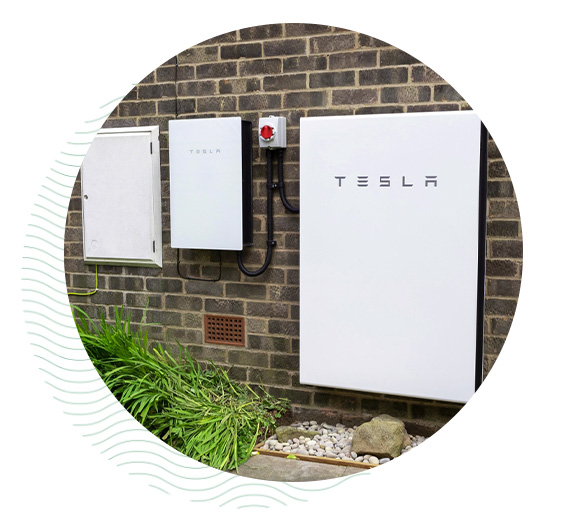

Looking to start your solar battery journey? You’ve found the right place.
Remote battery system designs until you’re ready for a survey. Leave your details in the box on the right and one of our team will reach out to you on the same day.


There’s more solar batteries being installed now than ever, some without solar panels! Is there any question why? Recent energy price hikes have halved the return on investment, making batteries an attractive option for most homeowners to consider.
Solar batteries are a low maintenance ‘set and forget’ technology. A power storage vessel of your own that pays for itself, increases your property value and lowers your carbon footprint.
With our cars, heating and the world around us becoming more dependant on electricity, it’s only a matter of time before there’s batteries everywhere
Reach out today to receive a free-of-charge, no obligation remote design and quote for batteries in your home.

There are pros and cons to each and no right or wrong, we can gladly advise which would would suggest with your home battery installation, explaining the logic behind our recommendation.
DC coupled batteries use a hybrid inverter, meaning that the inverter for the solar is the same inverter for the batteries. The advantage of this is that excess made energy is fed directly into your batteries in DC. The energy is only inverted once, as it leaves the battery (this is more efficient than AC coupled batteries, saving two steps of inversion). However, you’re limited on maximum system power delivery by relying on one inverter…
AC coupled batteries have a dedicated inverter for the battery, instead of relying on one inverter for battery and solar. This means excess made power has to be inverted from DC to AC through the solar inverter, then back into DC to be stored in the batteries, meaning another two steps of inversion. However, if there is a high demand at the property, there isn’t the ‘bottleneck’ of one inverter’s size. The solar inverter can deliver energy in conjunction with the battery inverter, allowing for a higher power delivery.
It’s a really common question and again, there’s no right or wrong- it’s mostly a matter of preference.
All lithium based batteries don’t perform as well in colder temperatures, this is down to the chemical composition. Similarly, when they’re “too hot” they will cease operation. Most batteries will cease operation if they reach 50°C which is very unlikely in most loft spaces in the UK. I would rather my battery stop working when it’s too hot, as the inverter will likely be covering the consumption, rather than it not working when it’s too cold, as it’s unlikely the solar will be generating too.
In short, no. Lithium batteries don’t require distilled water or ‘servicing’ like lead-acid based batteries did. They’re very much a set and forget technology.
It would be unfair to say that batteries aren’t a fire hazard, the same way that a toaster is technically speaking a fire hazard. People often have a 100kWh battery that charges at 7kW+, discharges at 500kW, gets thrown about at 2Gs in their internal garage and wouldn’t think twice about it (an electric vehicle). We’ve never had a battery fire in 10 years, the batteries are built with a plethora of technologies to prevent this ever occurring. Battery brands like Tesla or SolarEdge have the latest technology to lessen this possibility even further. The Tesla Powerwall 2 is still the only battery system on the market to incorporate a liquid thermal management system that enables it to operate in a wide range of temperatures from -20 to +50°C. The SolarEdge Energy Bank has the option of adding an inbuilt fire suppression system
As of March 1st 2024, there is 0% VAT on the retrofit installation, or addition of batteries to an existing or new system. This was at 20% VAT beforehand.

